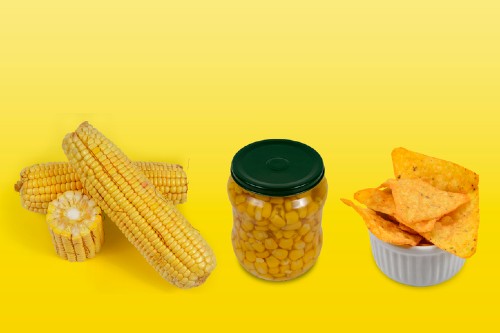
An image illustrating, unprocessed, minimally processed and ultra processed foods.
New research that compared the taste perception of less processed foods with ultra-processed foods (UPFs), found participants viewed UPFs no more pleasant tasting than less processed foods. The University of Bristol-led findings, published in the journal Appetite today [27 November], supports the theory that humans are programmed to learn to like foods with more equal amounts of carbohydrate and fat. Carbohydrate (including sugars) and fat provide most of the calories in human diets.
The study, led by Bristol's Nutrition and Behaviour Group, wanted to test the common but largely untested assumptions that food energy density (calories per gram), level of processing, and carbohydrate-to-fat ratio are key factors influencing food liking and desirability.
In the experiment, involving 224 adult volunteers, participants were presented with colour images of between 24 and 32 familiar foods, varying in energy density, level of processing (including UPFs), and carbohydrate-to-fat ratio. There were 52 different foods in total, including avocado, grapes, cashew nuts, king prawns, olives, blueberry muffin, crispbread, pepperoni sausage, and ice cream.
Participants were then asked to rate the foods for taste pleasantness (liking), desire to eat, sweetness, and saltiness while imagining tasting them. The validity of this method was confirmed by, for example, finding a strong relationship between sweetness ratings and food sugar content.
Results from the study showed that, on average, UPFs were no more liked or desired than processed or unprocessed foods. However, foods that combined more equal amounts (in calories) of carbohydrate and fat, were more liked and desired than foods containing the same number of calories mostly as carbohydrate, or mostly as fat. This is known, from previous research, as the 'combo' effect.
Further results revealed that foods with higher amounts of dietary fibre were less liked and desired, and foods tasting more intense (mainly related to the level of sweetness and saltiness), were more liked and desired.
Professor Peter Rogers in the School of Psychological Science and the study's lead author, commented that the results for UPFs were surprising. He said: "Our results challenge the assumption that ultra-processed foods are 'hyperpalatable', and it seems odd that this has not been directly tested before.
"However, whilst ultra-processing didn't reliably predict liking (palatability) in our study, food carbohydrate-to-fat ratio, food fibre content, and taste intensity did – actually, together, these three characteristics accounted for more than half of the variability in liking across the foods we tested.
"The results for sweetness and saltiness, are consistent with our innate liking for sweetness and saltiness. And the results for carbohydrate-to-fat ratio and fibre might be related to another important characteristic that determines food liking.
"Our suggestion is that humans are programmed to learn to like foods with more equal amounts of carbohydrate and fat, and lower amounts of fibre, because those foods are less filling per calorie. In other words, we value calories over fullness.
"In turn, this trait helps us to maximise calorie intake and build up fat reserves when food is abundant – which is adaptive in circumstances when food supplies are uncertain or fluctuate seasonally, but not when food is continuously available in excess of our immediate needs."
The Nutrition and Behaviour Group are currently testing the calories versus fullness idea in further studies of food liking and meal preferences, including across different countries and cuisines.
This research was funded by the University of Bristol's School of Psychological Science.
Paper
'Evidence that carbohydrate-to-fat ratio and taste, but not energy density or NOVA level of processing, are determinants of food liking and food reward' Peter J. Rogers et al. in Appetite.






